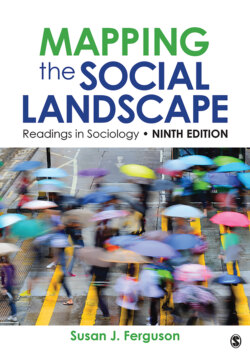Читать книгу Mapping the Social Landscape - Группа авторов - Страница 75
Gender-Based Strategies
ОглавлениеJust as waitresses attempt to resist the power structure at Bazooms, they also resist and manipulate gender roles to fit their needs. As one would expect, not all of the women hired at Bazooms were comfortable with the Bazooms girl role they were supposed to embody on the job. Much of the controversy about taking a job at Bazooms centers around the uniforms. About half of my interviewees described initial nervousness and insecurity about the uniforms. But at the time of most of the interviews (two to three months after the interviewees had started work), these thoughts had changed….
The only thing I hate about the Bazooms uniform is that they tie the knots [on the back of the tank top] so tight that I can’t breathe. And the nylons, they are always running and I have to buy new ones. They tried to get me to wear XX small shorts and I minded that. They made me try it on and I’m, like, “I’m not wearing this!” But the X small isn’t bad….
Each waitress went through a socializing process that often began with feeling nervous, even opposing the uniform. Waitresses then went through a period of adjustment based upon the fact that each wore the same thing as her coworkers did. Thus, as the definition of normal was revised, the nervous comments and complaints tended to subside. Yet, not everyone wears the same thing in the same ways. As their comments suggest, waitresses make choices about what to wear, and how to wear their outfits. The women made these choices based upon how comfortable they felt with the Bazooms girl image and their calculations about the financial utility of various style choices. Choices about whether to show cleavage, to wear a T-shirt (seen as more conservative by not highlighting the breasts) or a tank, to hike up the shorts, and so forth are also examples of negotiating the Bazooms girl’s sexualized image. In other words, through manipulation of uniforms, these women manipulated the Bazooms girl concept to fit their own self-images and goals….
But dress codes aren’t the only thing that waitresses actively negotiate. Along with the dress codes come other pressures associated with “femaleness,” especially in terms of appearance. [Trina] stated that appearance-based insecurities often became obsessions:
A lot of the girls are obsessed with the way they look. I know with our society looks are so important. I care about how I look. And there’s not one girl in there who isn’t really pretty. But I walk in there and people are talking about losing weight and stuff. It’s too much based upon looks. I tell them, “I can tell you how to lose fat, and I can do it if I want, but I like eating what I eat…. ”
By being aware of pressures to be thin and pretty, and counseling [her] coworkers on resisting these pressures, Trina [was] actively redefining gender ideals in the workplace.
